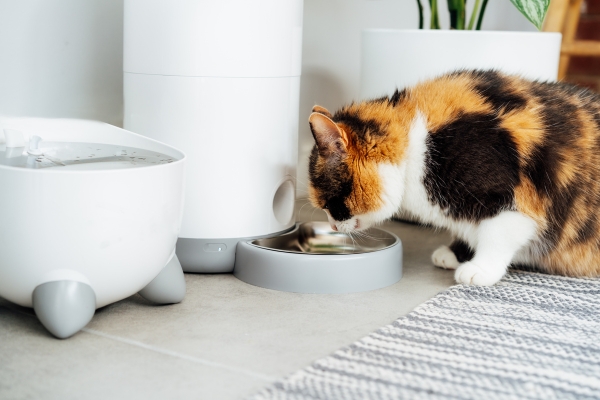How Long Can You Leave Your Cat Alone with an Automatic Feeder?
Life with a feline friend is full of joys, cuddles, and independent personalities. But what happens when duty calls and you need to leave your fur baby home alone? While cats are known for their self-sufficiency, their well-being still needs to be a top priority.
This is where the convenience of automatic feeders comes in, but how long can you truly rely on technology before needing a helping paw? Let’s delve into the world of solo cat care and navigate the responsible use of automatic feeders.
The Power (and Limits) of Automation:
Automatic feeders are lifesavers for busy cat owners. They dispense pre-portioned meals on a schedule, ensuring your kitty’s tummy stays happy even when you’re not around. However, it’s crucial to remember that these devices address only one aspect of cat care: nutrition.
Factors to Consider Before Hitting the Road:
-
Your Cat’s Age and Health: Kittens and senior cats have specific needs that might not be met solely with an automatic feeder. They may require more frequent feedings, specialized diets, or medication administration.
-
Duration of Your Absence: While feeders can manage short trips (think overnight or a weekend), 24 hours should be the absolute maximum for a healthy adult cat. Beyond that, consider alternative care options.
-
Your Cat’s Individuality: Some felines are more independent than others. Anxious or social cats might struggle with extended solitude, even with food readily available.
-
Feeder Reliability: Technical malfunctions happen. Ensure your feeder is high-quality, has backup power options, and is thoroughly tested before you leave.
Beyond Food: Ensuring Your Cat’s Well-being:
Remember, an automatic feeder doesn’t replace human interaction and environmental enrichment. Here are additional steps to ensure your cat thrives during your absence:
- Secure a Reliable Backup: Arrange for a trusted friend, neighbor, or pet sitter to check on your cat regularly. They can provide fresh water, litter box cleaning, playtime, and socialization, crucial for their mental and physical health.
- Create a Stimulating Environment: Leave engaging toys, puzzle feeders, scratching posts, and window perches to keep your cat occupied and prevent boredom.
- Minimize Stressful Changes: Maintain your cat’s regular routine as much as possible. Avoid introducing new furniture, scents, or other potential stressors while you’re away.
Additional Tips for a Smooth Solo Adventure:
- Gradually Introduce the Feeder: Before relying on it solely, let your cat get familiar with the feeder’s sound and function while you’re still home.
- Start with Small Trips: Gradually increase the duration of your absences to assess your cat’s comfort level.
- Leave Clear Instructions: Inform your backup person about your cat’s routine, feeding schedule, any medications, and emergency contact information.
Conclusion:
Automatic feeders are fantastic tools, but remember, they are just one piece of the puzzle. By carefully considering your cat’s needs, planning accordingly, and ensuring their overall well-being, you can create a stress-free solo adventure for both of you. Remember, a happy and healthy cat is a purrfectly content cat, even when you’re not around.
Bonus: Consider a pet camera for peace of mind! Being able to check in on your feline friend visually can offer additional reassurance and allow you to monitor their behavior remotely.

